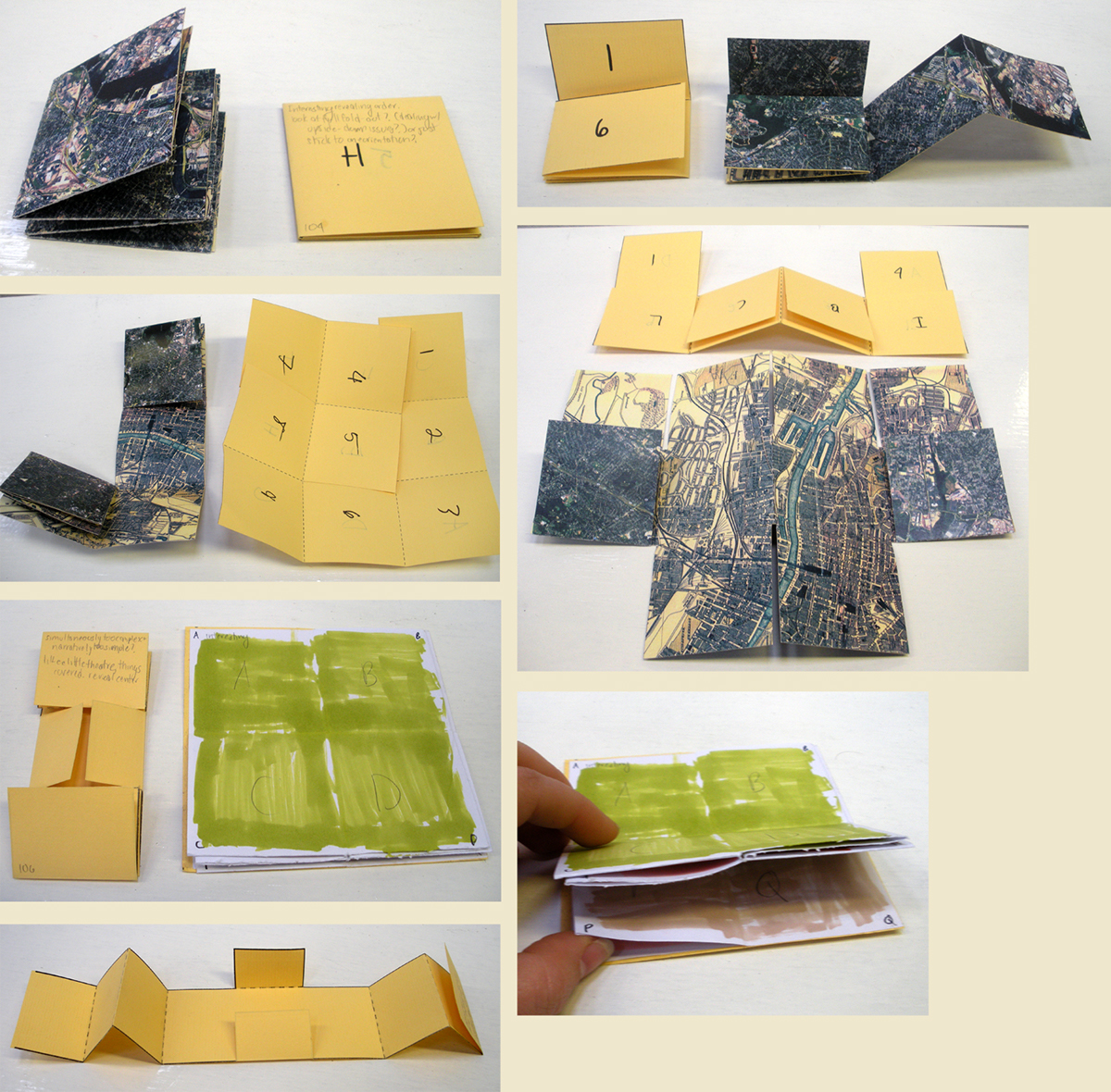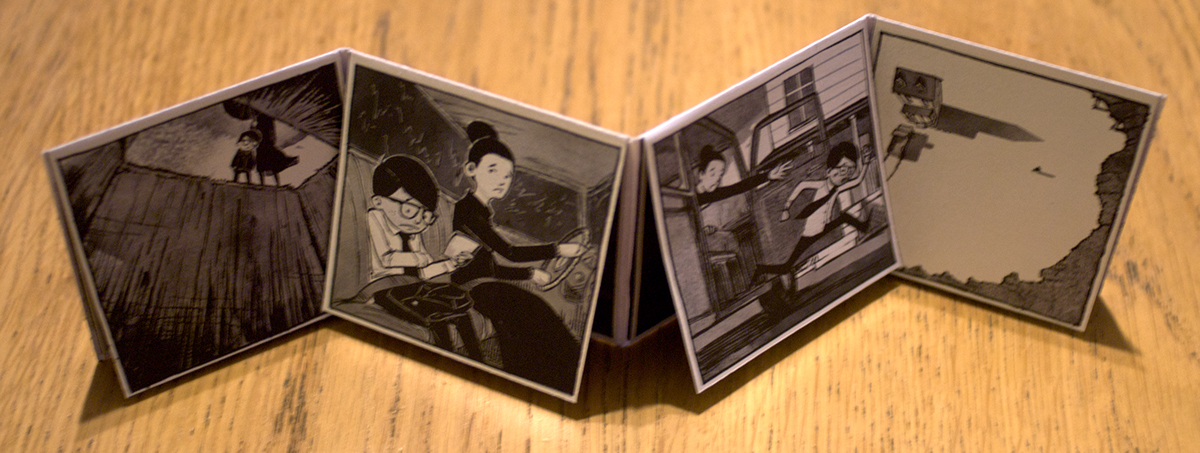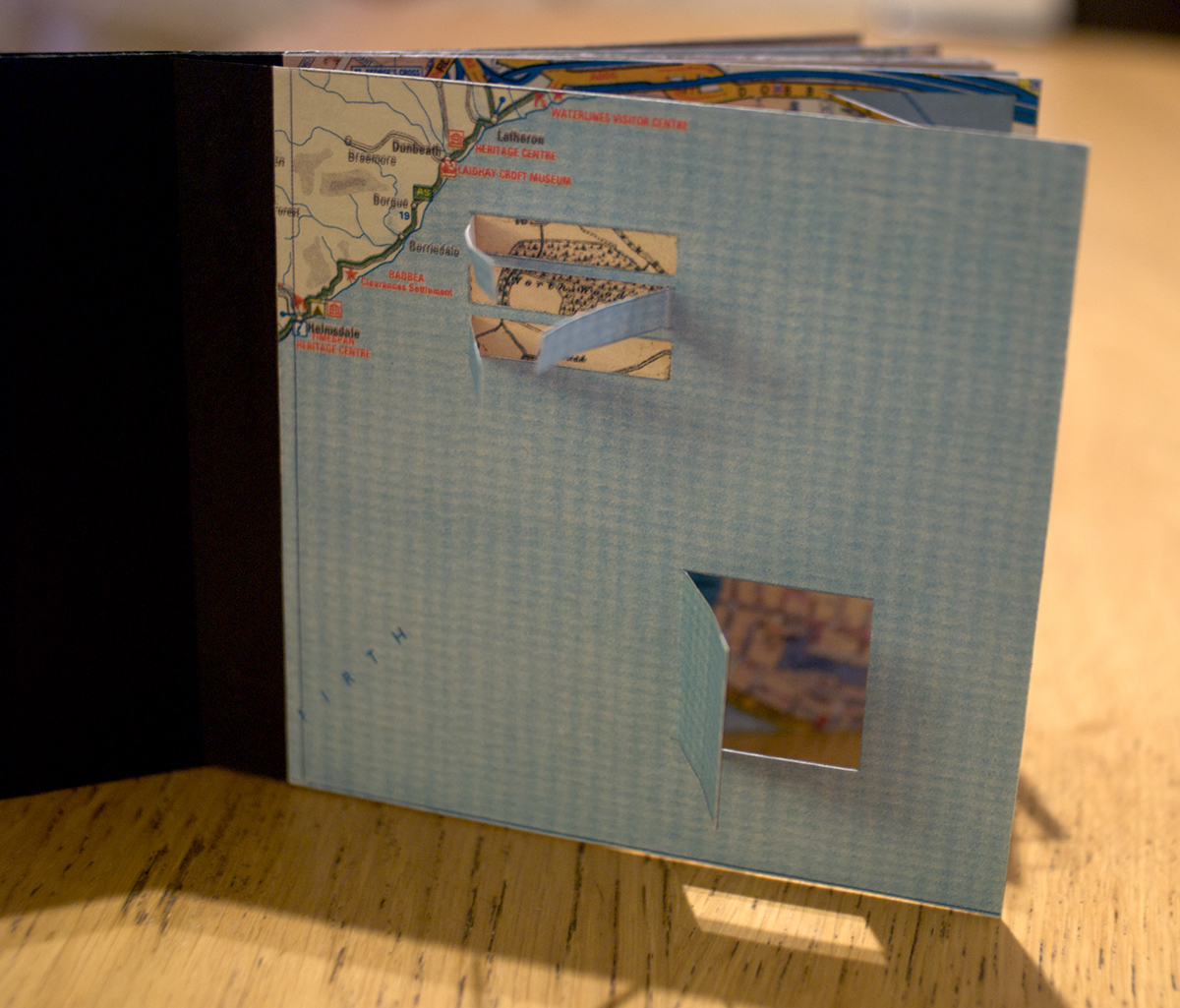Folding Narratives and Map Books
Maps are essentially a story about how to get from point A to point B. There might be multiple paths, but we generally assume that we can only take one at a time and follow them in a specific order.
Yet there is an element of suspension of disbelief that we allow for in paper maps. Take a map of Scotland for example. In many cases we know that islands are further away from the mainland than they seem, but we imagine the intervening excess ocean. Shetland and Orkney are often in boxes at the bottom of the map, when we know they are far to the north. Never mind the places in the world where boarders and country names can change on a daily basis.
Digital maps, however, are expected to be accurate and up to date. If we look at Google Maps, arguably one of the most popular maps available today, it uses a version of the Mercator Projection. At close scale, such as street level, this projection is quite accurate. Yet at a more global scale, the projection distorts the size and shape of objects the further they are from the equator. In this way, continents like Africa look markedly smaller than Europe, South smaller than North America. Whether we’re aware of it or not, there is inherently a fiction even in the maps we hold to be truth. So there’s an interesting plasticity to how truthful we expect maps to be.
As I played with maps, I found another vein worth exploring. Often maps are interacted with in a folded form. I wasn’t aware of it, but there are a multitude of different map folding techniques. When maps are folded, suddenly sections of the map that aren’t geographically connected are juxtaposed, making new paths that may visually make sense, but can’t physically exist.
Could this kind of visual play be utilized to break down linear narratives? If a story was laid out in panels instead of map content, would the reader try to form new stories depending on how they unfolded the object? This led me into exploring a number of different folding methodologies. I became interested in play and how the reader’s engagement with the physical object could change the course of the narrative.
Yet there is an element of suspension of disbelief that we allow for in paper maps. Take a map of Scotland for example. In many cases we know that islands are further away from the mainland than they seem, but we imagine the intervening excess ocean. Shetland and Orkney are often in boxes at the bottom of the map, when we know they are far to the north. Never mind the places in the world where boarders and country names can change on a daily basis.
Digital maps, however, are expected to be accurate and up to date. If we look at Google Maps, arguably one of the most popular maps available today, it uses a version of the Mercator Projection. At close scale, such as street level, this projection is quite accurate. Yet at a more global scale, the projection distorts the size and shape of objects the further they are from the equator. In this way, continents like Africa look markedly smaller than Europe, South smaller than North America. Whether we’re aware of it or not, there is inherently a fiction even in the maps we hold to be truth. So there’s an interesting plasticity to how truthful we expect maps to be.
As I played with maps, I found another vein worth exploring. Often maps are interacted with in a folded form. I wasn’t aware of it, but there are a multitude of different map folding techniques. When maps are folded, suddenly sections of the map that aren’t geographically connected are juxtaposed, making new paths that may visually make sense, but can’t physically exist.
Could this kind of visual play be utilized to break down linear narratives? If a story was laid out in panels instead of map content, would the reader try to form new stories depending on how they unfolded the object? This led me into exploring a number of different folding methodologies. I became interested in play and how the reader’s engagement with the physical object could change the course of the narrative.
Process


Outcomes
To look at how the physicality of unfolding can impact reading, I chose “Nothing Is Forgotten” by Ryan Andrews as a source because it is both highly linear and non-verbal. By using a work that does not rely on textual cues, it allows the reader to freely form new relationships between the panels. The work the reader does to fill in the gaps between action in the different panes is, in a sense, an intensified version of the same activity that occurs whenever someone views a page of comics, filling in the “off-camera” action that occurs in the gutters.


When the reader first encounters these books, their initial impulse would be to read it linearly. Upon further interaction, they may discover that there is a secondary way to read the books.
The first books seems to be a map of the Clyde from the early 1900’s. Inside, running parallel to the path of Glasgow’s river, is a satellite image of the Charles River in Massachusetts. These are the rivers that have shaped the two cities I call home.
The second book appears blank when read as one expects, but a hint of ink bleeds through the page. If the reader pulls on the edge of the pages, a honeycomb opens up, revealing the text written in individual cells. The honeycomb pattern also offers the juxtaposition of the text from each cell with its neighbor, creating interesting pairings of text.
The first books seems to be a map of the Clyde from the early 1900’s. Inside, running parallel to the path of Glasgow’s river, is a satellite image of the Charles River in Massachusetts. These are the rivers that have shaped the two cities I call home.
The second book appears blank when read as one expects, but a hint of ink bleeds through the page. If the reader pulls on the edge of the pages, a honeycomb opens up, revealing the text written in individual cells. The honeycomb pattern also offers the juxtaposition of the text from each cell with its neighbor, creating interesting pairings of text.


You read a map to get from point A to point B via a concrete system of roads or other paths, delineated by agreed upon symbols and lines. What if we confound the normal means of reading and interacting with a map by inserting or deleting elements? In order to make sense of these maps, they must be read as layers, or pages in a book; they must be played with.







